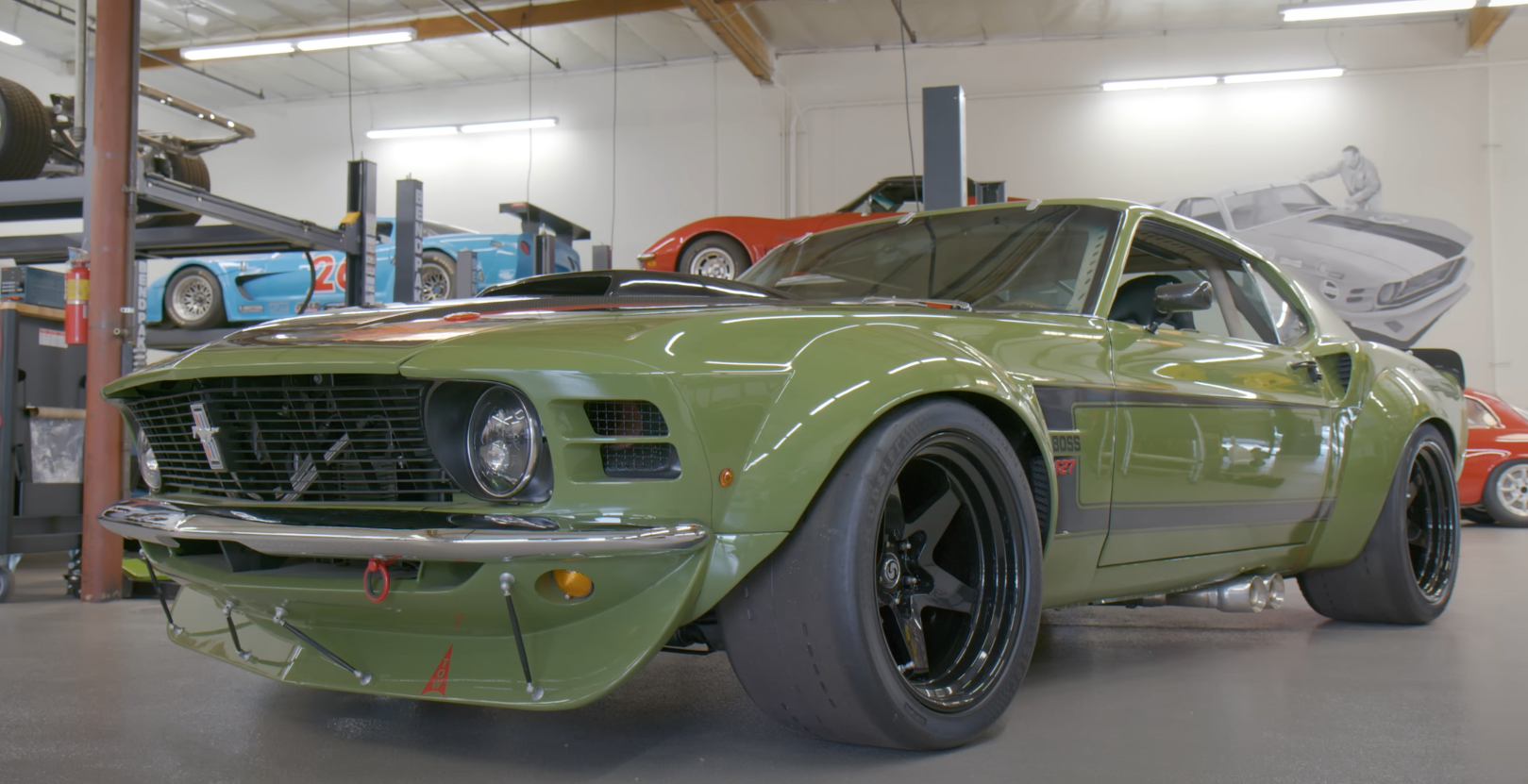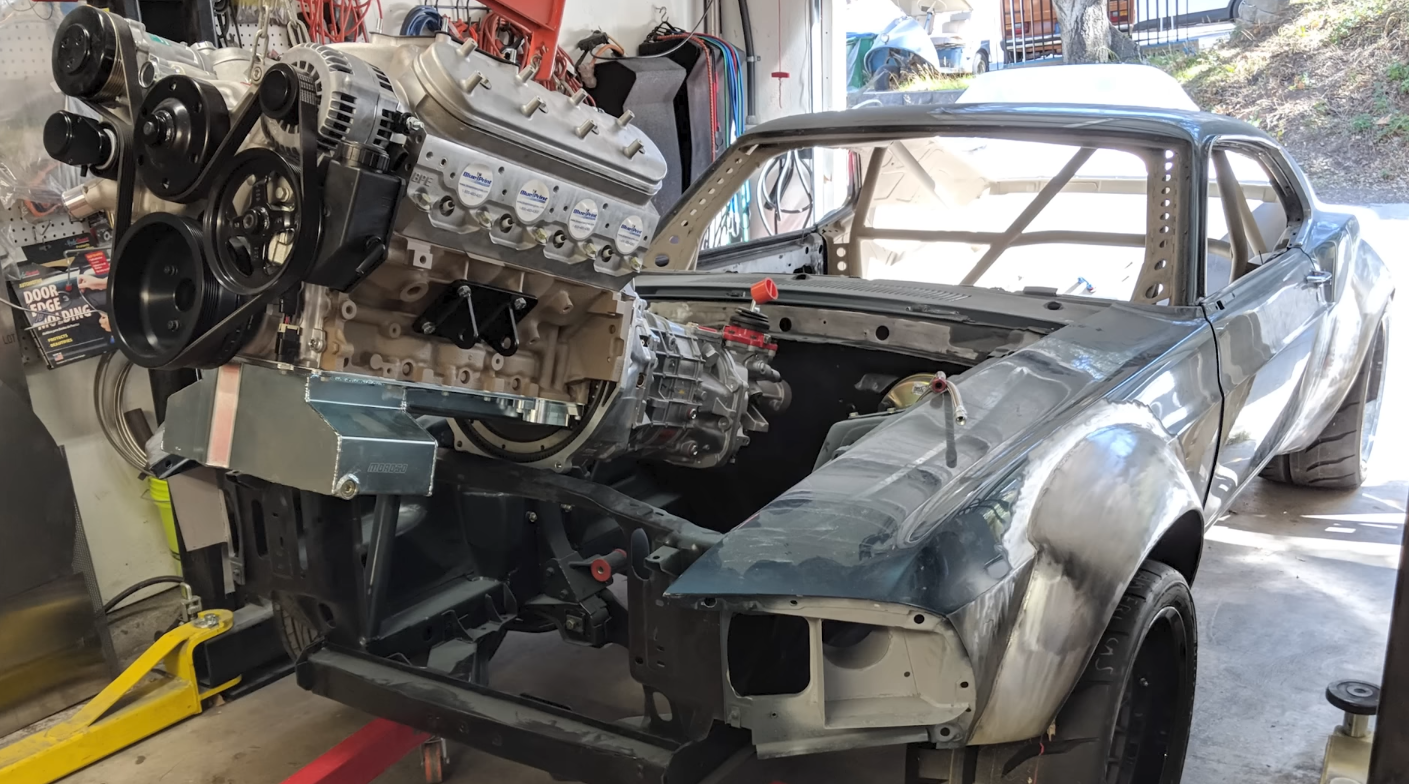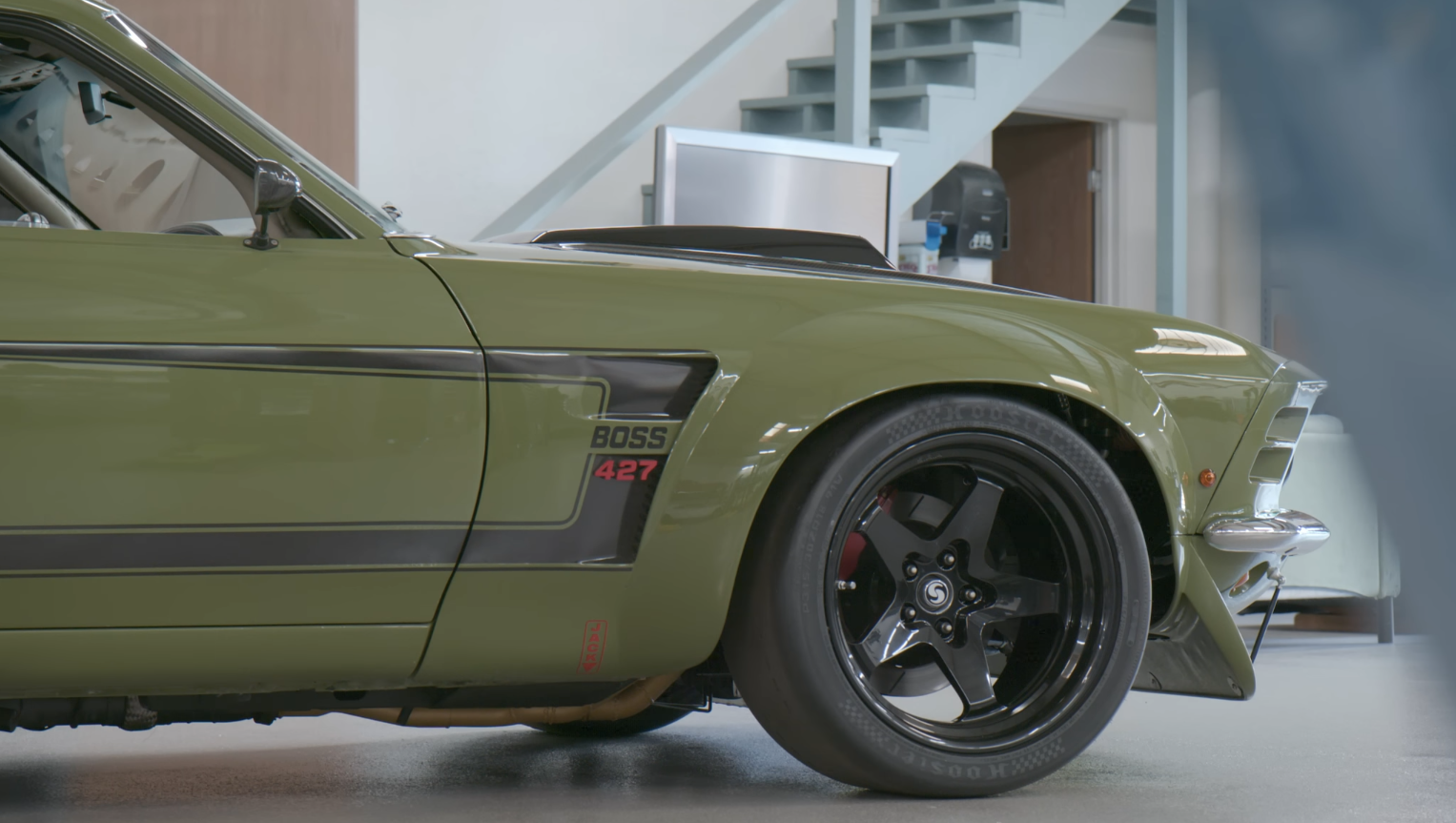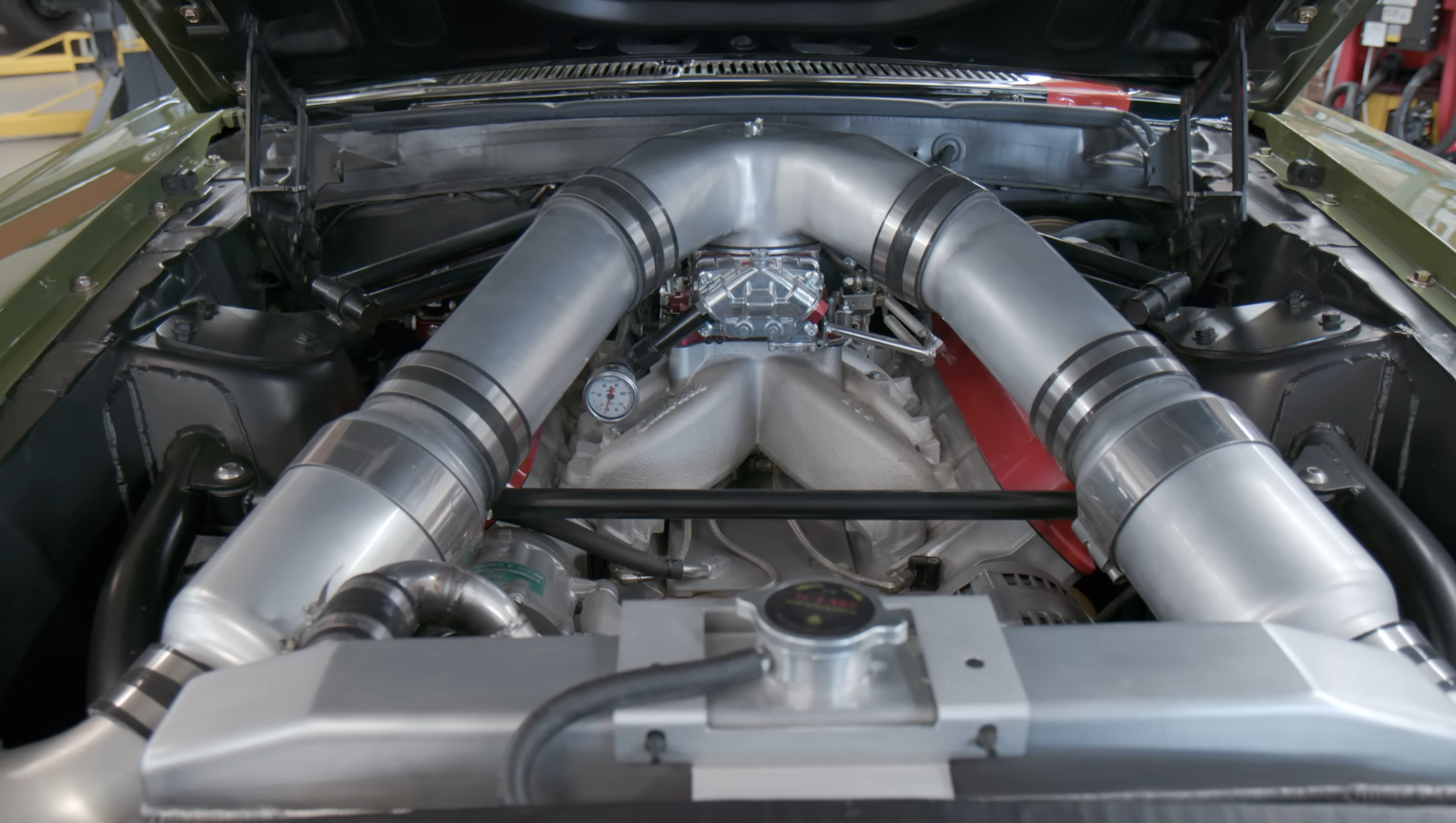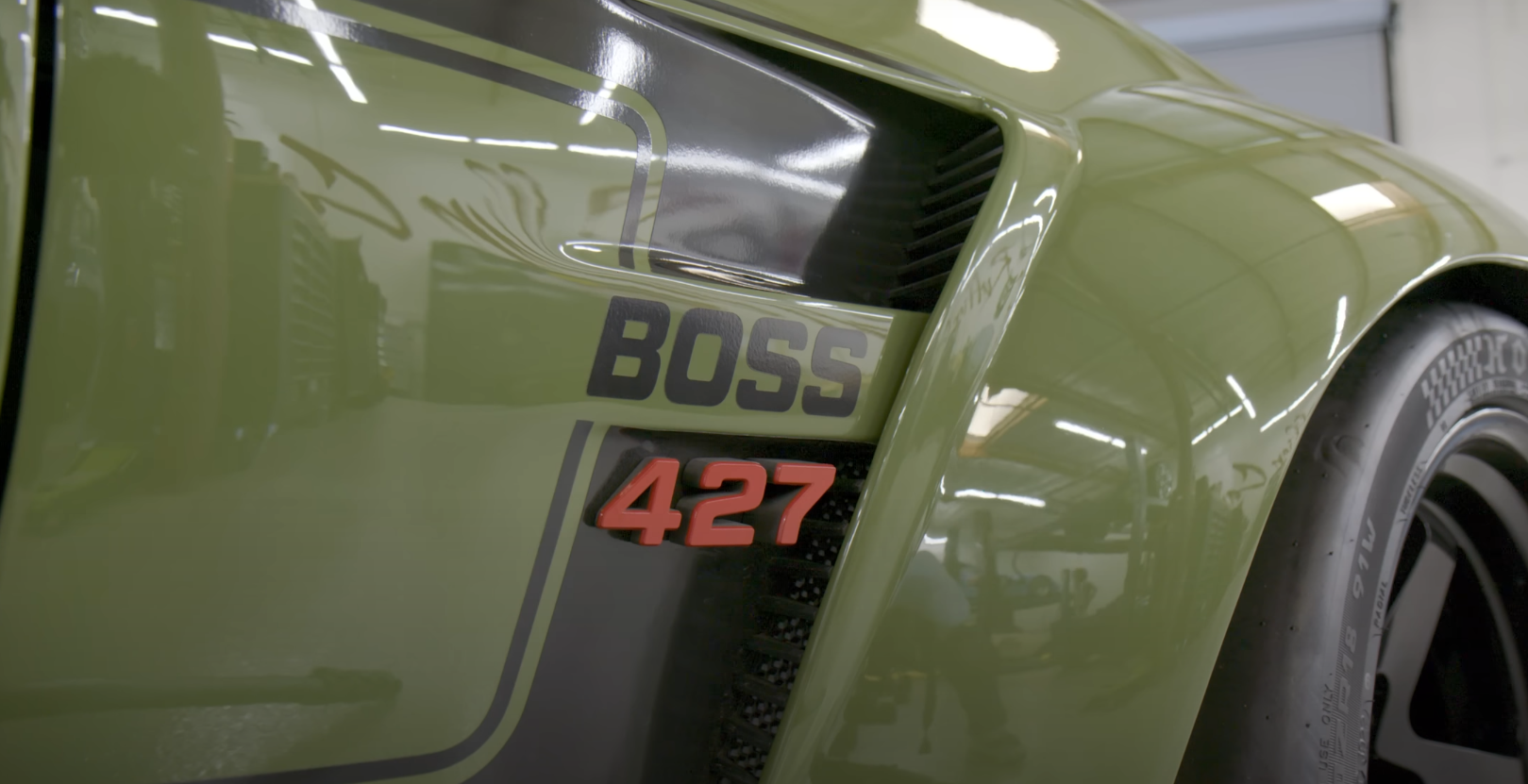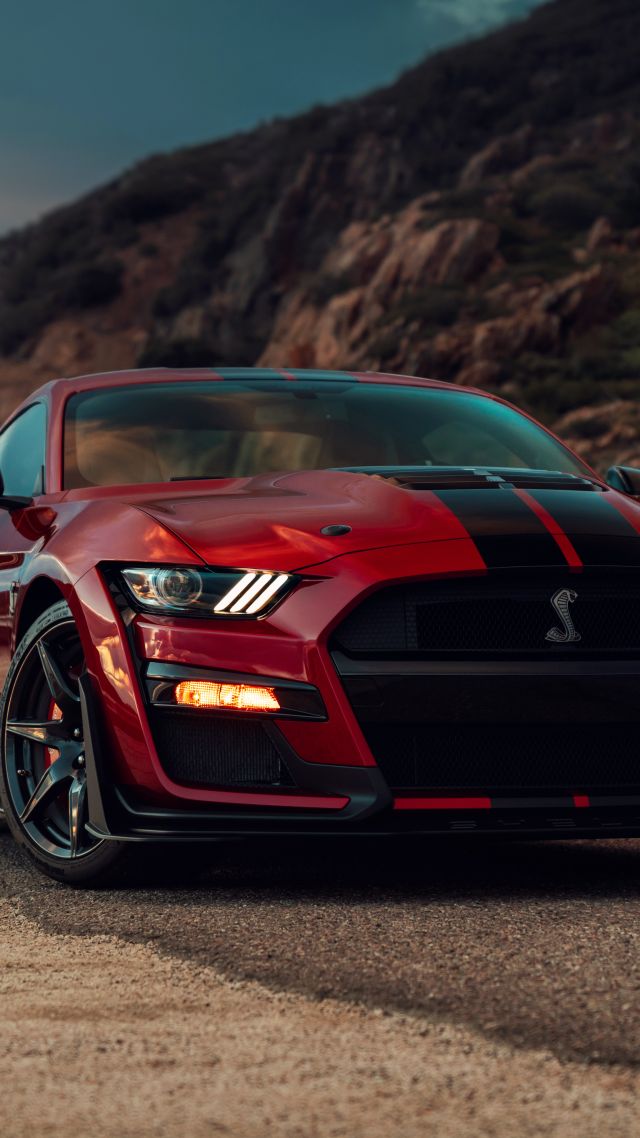Chris Ashton built his first car from the ground up, turning a 1970 Mustang into a unique and functional machine. He did not have a background in the automotive industry, but his experience with graphic design and passion for cars led him to take on this major project. As his work gained attention online, the car quickly became well-known, even drawing interest from celebrities and the public.
Building the Mustang involved custom fabrication, attention to small details, and a focus on performance, especially for autocross events. This project inspired the start of a new shop and a small team, where creativity and skill continue to shape new vehicles.
Key Takeaways
- Chris Ashton built a one-of-a-kind 1970 Mustang without prior automotive industry experience.
- The car’s design focused on both custom looks and strong performance.
- Building this car led to new opportunities and a growing online following.
Beginnings and Motivations
Chris Ashton’s Early Years
Chris Ashton grew up with a strong interest in cars. He enjoyed collecting Hot Wheels and spent time around vehicles because his father worked as a car dealer. During his childhood, Chris always found himself drawn to cars and designing things. Even before having a driver’s license, he owned his first car and started making changes to it in the backyard. As a young adult, he hoped to study car design in college, but the available courses focused on computer graphics and illustration, so he followed that path instead.
Building the First Complete Vehicle
The first car Chris fully built was a 1970 Mustang. Unlike his previous projects, he took this one apart and rebuilt it from the ground up. He worked on it in a small two-car garage, learning new skills like metal shaping to create custom parts. The Mustang was built for autocross events, focusing on low speed, tight handling, and strong acceleration. Every part had purpose, from large, thick tires for grip to custom carburetor choices for better engine response. Chris also painted the murals on the car himself. The finished car drew a lot of online attention, leading to a large Instagram following and even offers from celebrities to purchase it.
Specifications Table
| Feature | Details |
|---|---|
| Model | 1970 Mustang |
| Engine | LS3, 427 cubic inches |
| Designed for | Autocross |
| Customizations | Hand-built fender flares, steel body, special carburetor, customized profile |
Experience Shaping Games
Outside of building cars, Chris spent over twenty-five years working in the video game industry. He studied graphic design and illustration, which led him to jobs creating visual art for games. His background in art and video games shaped how he approached car projects, focusing on both form and function. Even as his cars gained more attention, Chris continued his career in video games while starting Ruffian Cars and growing his team to build exciting custom cars.
Creating the 1970 Mustang
Early Ideas and Goals
Chris Ashton always liked cars growing up, with muscle cars as a favorite. He got his first car before he even had his license and kept working on it in his backyard. Chris wanted to build a car that would feel at home on the street but was inspired by Trans Am race cars. He planned for everything to be simple and manual, with nothing controlled by computers.
A table showing Chris’s background:
| Background | Details |
|---|---|
| Primary Career | Video game art and design |
| Auto Industry Experience | None before building the Mustang |
| Reason for Build | Love for cars and racing heritage |
Building in a Small Garage
The whole project was started and finished in a two-car garage. Chris tore the Mustang down to its frame and built it up from scratch. He taught himself to shape metal using tools like a hammer and English wheel to create the steel fender flares, front spoiler, and vents.
- He installed an LS3 engine because it was lightweight but could give the torque he needed.
- Large tires were used to handle autocross, so the big fender flares were needed.
- Chris used a carburetor instead of fuel injection to keep the driving experience as real as possible.
He painted the car’s graphics himself, using real paint and not decals. The car also has a 20-gallon fuel cell for long runs.
Moving to the Ruffian Workshop
After the Mustang’s success, Chris moved from his home garage to a fully equipped shop called Ruffian Cars. He hired three people who also love working on cars. Their new way is to build cars they are excited about, not only ones with buyers waiting. Chris believes in making each car even better with the help of his whole team.
A short list of the new approach:
- Build cars based on their own inspiration
- Work with a small, passionate team
- Focus on quality and excitement over quantity
How the Car Was Designed
Classic American Power as a Guide
Ashton grew up loving the look and feel of American muscle cars. He wanted his car to have the same presence and spirit as those old classics. He made sure the car could be driven on city streets but also show real muscle—just like the late 1960s and early 1970s cars he admired.
Key Features:
- Large, powerful engine
- Strong, bold lines
- Use of real steel for fenders and body parts
- Hand-built custom touches instead of factory parts
Inspired by Racing Legends
Trans Am race cars had a major impact on Ashton’s ideas. He checked out racing forums and talked with people who own and compete with real vintage cars. Their stories and tips helped him decide on the look and function his car needed. For example, he shaped the front of the car to copy the lower nose of classic race cars, which cuts wind resistance.
Design Methods:
| Aspect | Race Car Technique |
|---|---|
| Body shape | Lowered front end |
| Fenders | Flared for wide tires |
| Fuel system | Kept carbureted, not fuel-injected |
Getting the Details Right
Ashton wanted his car to drive like an old race car but with some modern power and safety. He aimed for a perfect mix between an authentic look and real-life performance. He made all the big choices—like engine and carburetor—by thinking about how the car would handle on tight tracks and in city driving. Nothing is computer-controlled; everything is manual to let the driver feel the road.
Balance Checklist:
- Lightweight aluminum engine block
- Manual transmission, no electronics
- Hand-fit body panels for less drag
- Modern tires for grip but classic looks
- All parts chosen for both performance and accurate style
Details on Mechanical Setup
Motor and Drivetrain
The car uses a 427 cubic inch V8. This engine creates a lot of torque, which is useful for autocross. The goal was to keep the engine light but still strong for fast starts and quick cornering.
The engine has a carburetor, not fuel injection. Chris picked a ring-type carburetor to solve stalling problems during hard braking. This carburetor gives faster throttle response and better fuel delivery. The setup allows for driving mostly in second gear on the track.
Choosing the LS3 Block
Chris picked an LS3 engine for two reasons: cost and performance. The block is made of aluminum, so it is lighter than traditional iron blocks. That helps the car handle better, especially up front.
Even though it is a modern engine, it uses an old-fashioned cam-in-block design. Chris chose this so the engine would fit down low between the shock towers. That keeps the weight low and set back in the engine bay.
LS3 Engine Advantages
- Lightweight (aluminum block)
- Fits well in car’s engine bay
- Makes high torque for autocross
Gearbox and Final Drive
The car uses a manual transmission. All driving input is handled by the driver. There is no computer-controlled shifting or traction assist. Most of the time, Chris uses second gear after leaving the starting line.
The rear end is matched to help the car accelerate well out of turns. This pairing of transmission and rear axle ratio supports low-speed, high-grip racing.
Handling and Ride Setup
The car has a custom suspension aimed at tight handling for autocross. It is not built for high speed on big tracks, but for quick turns and solid grip.
Big, wide tires fit under the steel fender flares, which Chris made himself. These allow the car to use more grip without rubbing. The front suspension and steering are designed for fast, direct feedback.
Suspension Features Table
| Feature | Details |
|---|---|
| Tire size | Large, wide for extra grip |
| Fender flares | Custom, hand-formed steel |
| Intended use | Autocross, tight handling goals |
| Front geometry | Quick steering response |
Handcrafted Metalwork
Steel Exterior Panels
All exterior panels on this car are made from steel, not fiberglass or plastic. Building these panels took learning new tools, like the English wheel and planishing hammer. Every body piece, including vents and spoilers, was shaped and welded by hand.
| Element | Material | Method |
|---|---|---|
| Fenders | Steel | Hand-formed |
| Vent Inserts | Steel | Custom cut/welded |
| Front Spoiler | Steel | Shaped manually |
| Main Body | Steel | All fabricated |
Extended Wheel Arches
The fender areas were specially designed to cover extra-wide tires. By adding these custom wheel arches, the car gains the clearance needed for autocross tires. This makes the car more stable in quick turns and gives it an aggressive look.
- Handbuilt from steel
- Made wide for better tire fit
- Needed for high-grip, low-speed racing
Nosepiece and Splitter Shape
The front spoiler is not only steel but also handmade for both style and function. It was shaped and cut using garage tools until it fit the car’s form. The design keeps the nose low, helping with grip and speed during tight racing events.
*Reduces air drag
*Improves front-end downforce
*Blends with steel body lines
Upgrades for Airflow
To improve how the car cuts through the air, the body lines and nose were changed. The front end sits about an inch lower than stock, helping reduce wind resistance. These modifications were inspired by old Trans Am racing cars, making the car sleeker and more effective for its purpose.
- Side profile mimics classic racers
- Lowered nose for less drag
- Changes hidden when viewed assembled
Inside Features and Design
Gas Tank Setup and Size
The car uses a 20-gallon fuel cell, which is placed for easy access and better weight distribution. This larger capacity allows for longer runs and fewer stops for refueling. The choice of fuel cell fits well with the car’s purpose for autocross and street driving.
| Feature | Details |
|---|---|
| Fuel Cell Type | Custom-installed |
| Capacity | 20 gallons |
| Main Benefit | Extended driving range and improved balance |
Custom Painted Artwork
There are hand-painted murals on the vehicle, created by the builder himself. He used his background in graphic design and illustration to paint these details directly on the car. These are not decals or stickers; every mural is painted by hand, which impresses many visitors who expect printed graphics.
- Artist: Owner and builder
- Style: Custom, painted directly on panels
- Material: Standard automotive paint, no vinyl
Practical Modifications
Several functional updates were added to increase the car’s performance for autocross racing. These include custom flared fenders made from steel, designed and built by hand using special tools. The changes follow the look of old Trans Am race cars and give room for wider tires. These steel fenders and other adjustments help improve grip and handling without adding extra weight in the wrong place.
Other enhancements:
- Body panels reshaped for less wind resistance
- Car sits lower for better cornering
- No computer-controlled parts—everything is manual for a more authentic driving feel
Speed and Racing Highlights
Built for Tight-Course Racing
Chris Ashton built his 1970 Mustang with a focus on short, technical courses. The car was designed mainly for low-speed, high-grip events rather than for long, fast tracks. Its setup makes it well-suited for quick turns and rapid changes in direction.
A typical session uses only first and second gears. After the first corner, the car stays in second gear for the rest of the run. The engine is a 427 cubic inch LS3, chosen for its strong torque, which is important for quick acceleration at low speeds.
Main Focus:
- Low-speed handling
- Quick steering
- High traction
Driving and Cornering Abilities
Ashton’s Mustang has a suspension and body design that help it handle well during sharp turns. The car is fitted with wide tires, made possible by steel fender flares that Ashton made himself. These modifications improve grip and keep the car steady during cornering.
The car’s weight is also set up carefully. The LS3 engine sits lower and farther back than the original, which makes the front end lighter and reduces understeer. This balance helps the car stay planted and easy to control on tight courses.
Handling details:
- Wide, thick tires for better traction
- Lowered and repositioned engine for balanced weight
- Custom bodywork for aerodynamics and style
Changes to the Exhaust and Fuel System
The Mustang kept its carbureted setup to keep the driving experience direct and manual. A special annular-style carburetor was used instead of the regular model. This upgrade stops the engine from stalling during hard braking and gives a faster throttle response.
Fuel is delivered more evenly in a circle instead of from a single point, which helps the car run smoothly during aggressive driving. Ashton also installed a 20-gallon fuel cell to supply plenty of fuel during events.
| Component | Original | Modified |
|---|---|---|
| Carburetor | Standard 850 Holley | Annular booster style |
| Fuel Supply | Classic tank | 20-gallon fuel cell |
| Fuel Delivery | Single point | Circular/annular pattern |
Web Fame and Community Attention
Influence on the Web and Social Platforms
Chris Ashton’s 1970 Mustang became a sensation across the internet soon after it was built. Videos of the car were shared online, quickly gathering a large audience. His Instagram account gained many followers because of this car.
Online forums for car enthusiasts noticed his work. Members asked questions and shared their thoughts about the car, which helped spread awareness even more.
Highlights
- Large increase in social media followers, especially on Instagram
- Multiple videos posted by fans and car enthusiasts
- Active discussions on car forums
Appearances at Car Industry Events
The Mustang’s rise in popularity led to an invitation to display it at the Toyo Tires booth during the SEMA Show. This was a major step since SEMA is a well-known automotive event where new and unique builds are often featured.
| Event | Location | Year | Notable Feature |
|---|---|---|---|
| SEMA Show | Toyo Tires Booth | First appearance year* | Display of Chris’s 1970 Mustang |
*The exact year is not specified in the transcript.
Interest from Public Figures
As interest in the car grew, even celebrities became interested. Some offered to buy the Mustang after seeing its impact online and in person.
- Offers from celebrity buyers
- Increased visibility due to attention from well-known names
Chris received these offers while he was still deciding on the direction of his car-building career, showing the level of recognition the Mustang achieved.
Looking Forward: Plans and Goals
Expanding Ruffian Vehicles
Ruffian Cars plans to design and build more custom cars in the coming years. The team chooses projects that interest them, focusing on creating vehicles that are both unique and fun to drive. They do not build cars only for specific customers; instead, they make cars that excite their group and later offer them for sale.
A summary table of their focus areas:
| Focus | Approach |
|---|---|
| Car Designs | Build cars they’re passionate about |
| Sales | Sell finished cars, not custom orders |
| Innovations | Constant improvements on each project |
Growing the Team
The Ruffian Cars team started small but is now expanding. They now have three employees, each selected for their strong passion and experience in building cars. Every staff member brings their own skills and unique ideas. This helps make the cars better and pushes the group’s creativity.
Team goals:
- Hire people who love car building
- Share ideas to improve every project
- Learn new skills and methods
New Builds and Future Projects
Ruffian Cars has several future projects planned. The shop continues to work on cars like the GT40 and others that match their interest in classic racing style. They look for inspiration from past race cars but also add new technology and methods where it helps.
Key features of upcoming builds include:
- Handcrafted body panels and details
- Focus on both looks and high performance
- Mixing tradition with practical updates for modern use


